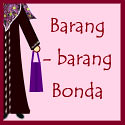Woahhhhh there.
Hm.. I guess my hedious picture sparked off a huge bonfire.
Choqchip has decided she’s scared of me, and katt (who I showed the picture for) has been suddenly quiet, probably in shock.
Listen.
The picture was a joke. It was meant to shock. Why do you think I posed with the rocker sign? :rolleyes:
But I guess it was my mistake for assuming that people didn’t care what I looked like and sees and appreciate me for who I am.
Or maybe, I was just too damn ugly? heh heh
Okay first thing’s first. Let me explain.
The clothing shown in the other picture is not an abaya. This is me in an abaya --->
The thing in the other picture is called a .. hm.. what is it called? A burqa? Anyways, it’s like a veil, though my kids call it my ‘batman mask’. :laugh:
You tie it around your head and your face is covered except for your eyes. I bought it the first summer I was here, when the sun got to be too much for me. You can read the account here. It is common to see local ar@b women wear that get up. Sometimes it’s even more extreme, their veil don’t even show their eyes, they look like they’re wearing a tent over their heads. :p
Caught in a sandstorm once, I understood why they would wear clothes that way. It really works as a protection against the sun and dust. I can almost imagine their nomadic ancestors wearing the same costume. Even the men wear headscarves, and they are probably used in the same way, as a protection against the elements, just like the Tuaregs still do now.
I also found an interesting side effect when I wore that veil. People think I’m an ar@b ma’am, and not some filipino or Indonesian maid. I get treated better, and one time, after a shopkeeper found that I was not ar@b, (coz I couldn’t speak a word of Arabic) he offered me a special discount! He seemed to be so proud that a foreigner is willing to wear their traditional costume. (Note: I’m not saying that maids should be treated as lesser beings, I’m just saying that the locals tend to look down at maids :( ).
I haven’t worn the burqa in a long time.. coz this summer I haven’t been out much, and when we did go out, we waited till it was later in the afternoon when the sun is more bearable.
The abaya, is basically a long black robe. You can either wear it over your normal clothes, or if the style doesn’t have any slits in it, you can wear it on its own. The abaya is common among the local arabs, and foreigners don’t usually wear them, except for in Saudi Arabia (and maybe Iran?) where it is compulsory. I asked a guy who grew up here what was the deal with forcing people to wear abayas, and he said the ruling happened when the Saudi government decided to compete with Iran on who is the most religious. Apparently that was also when they decided that all shops must close during prayer times. *sigh* I guess that is what happens when you impose God’s laws because of pride and not because you want to submit to God. :confused:
But I’m not complaining about the abaya. I find it to be quite elegant (plus it hides all the *cough*unslightly bulges*cough* erm curves). It’s like the Islamic equivalent to the perfect black dress. It is extremely convenient. I can be in my jammies, but put on my abaya and slip on my scarf, I’m ready to go! They have many different styles too. Some can be just plain black (for the traditional abaya wearers), but I’ve seen embroidered or glittered abayas (with matching headscarves) that are very very beautiful, fit for a formal dinner. (I can sense that I have piqued famygirl’s interest now.. tee hee!). :D
I must point out though, that the all-black get-up that most traditional arab women wear are not required by Islam. The veil is actually forbidden during prayer and pilgrimage. No where in the Quran was it mentioned that women must cover themselves in black robes and veils.
In Islam, women are required to wear modestly, exposing only their face and hands, but as long as you are properly covered, you can wear whatever you want. Your clothing can be made of any material (provided it’s not see-through), and be of any color or pattern or texture. Therefore it is all up to your imagination and creativity to look beautiful but still modest.

The picture here is what I would usually wear if I were not wearing the abaya. I think I still look pretty hot, no? ;)
In other countries, Muslim women wear their traditional costumes or more modern/western clothing like long sleeved shirts with long skirts or pants or jeans, with matching scarves.
Some Muslim women do not wear headscarves, but again, it’s a personal choice. Personally, I don’t think a headscarve makes you more pious, coz all changes need to happen from within, therefore I don’t usually hold anything against my friends and family who don’t wear the headscarf, nor do I think those who do cover their hair are better than those who don’t.
If you care to, you can read on my experience with the headscarf (hijab) here.
So there it is, a brief explanation on my picture, the abaya and the muslim women's dress code.
Actually, I am suprised that I even need to give an explanation.
I usually find comfort in not seing what a writer looks like, because usually their writing reveals more about them than what their physical appearances can.
but, to each, his own.
*bloobuddhistshrug*



No comments:
Post a Comment